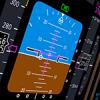
Sign in to follow this
Followers
0

Insight into the enormous forces at play during a 747-400 RTO
By
cavaricooper, in PMDG General Forum


By
cavaricooper, in PMDG General Forum